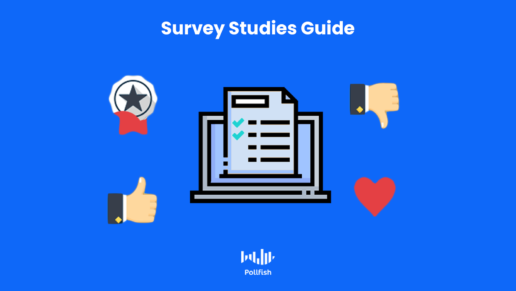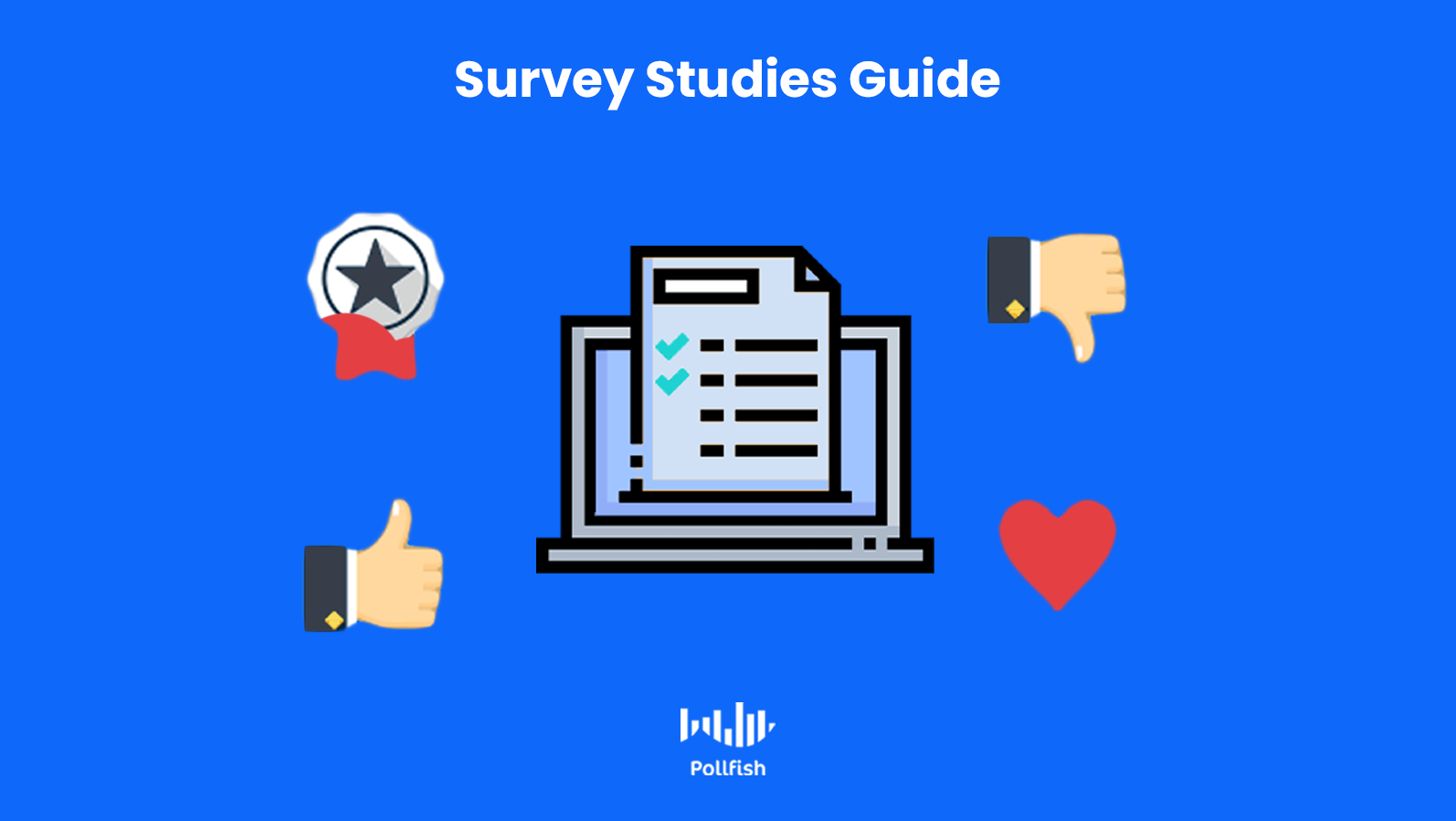How to Build Effective Survey Studies for Valuable Market Research
How to Build Effective Survey Studies for Valuable Market Research
Survey research is an invaluable approach to primary research for any market research campaign. Effective survey studies allow you to observe virtually any topic as it relates to your target market, including a specific segment of your target market.
But with so many types of survey research campaigns and survey studies, it can be challenging to decide on how to pursue and form a survey study. After all, the goal with any data collection campaign is to extract data that is as accurate and reliable for your research needs.
This article expounds on how to build effective surveys from the ground up so you can proceed with your survey research with knowledge and ease of mind.
Finding the Macro-Application for Survey Studies

Every survey needs a purpose. Say you have a burning curiosity about your customer base. When tackling survey research, connect this curiosity to a more general-purpose for your business or institution (if you are a market researcher outside the business sphere).
Surveys can be applied to a vast number of macro-applications, i.e., the applications dealing with some category in the business or research sectors. First, find the most important topics (or said curiosities) that you would like to see your survey address. Then, categorize them in one of the following macro-applications:
- General Marketing: Marketing involves all the activities needed to promote a business. Marketing market research exists to help businesses gauge their campaign efficacy and better understand their customers. If you choose this application, consider how you can gain insights more deeply by choosing a subdiscipline within marketing.
- Advertising: Deploying sponsored messages to grow demand and elicit purchases, advertising is used to influence customer behavior. This involves prompting existing customers to make further purchases or acquire new customers. Surveys can be used to see which advertising messages are the most resonant and which ads spawn the most interest. Researchers can ask questions centered on comparing full ads, or parts of an ad such as the imagery, a video snippet or the copy.
- Branding: This discipline involves creating a reputation, an image and a set of associations around a brand. Branding helps brands differentiate themselves from one another, along with establishing a style that a company is easily remembered by. Businesses can tie their surveys to branding by creating surveys to test new logos, slogans, a unique value proposition, content ideas (for example, if a company that sells electronics seeks to attach lifestyle content to its branding) and more.
- Market Segmentation: This macro-application refers to studying customers closely by dividing a target market into smaller segments. After all, a target market includes all the customers most likely to buy from a particular business, but it is not solely defined by one group. At their core, business surveys are designed to understand customers to a T. With this said, researchers can form personal questions about their target market’s habits, lifestyles, preferences and more to distill them into several segments. From there, marketers can adopt different marketing campaigns for each segment.
- PR: Public Relations, or PR, as it is commonly referred to, aims to control the distribution and spread of information about a company (or individual) and the public. Its goal is to control the narrative of a business or organization to gain positive public perception. Surveys can help on this front in that researchers can design questions on how well respondents know a business and their general thoughts on its operations, products, experiences, performance, etc. Researchers can also test out press release ideas and pitches through these surveys.
Turning to Secondary Research
After filtering your curiosities and questions into a specific macro-application, you need to find all the available information surrounding this application as it relates to your survey subject. This means, before setting up your survey, researchers ought to turn to secondary research.
This is because you wouldn’t want to forego key data already conducted and made available. If you do, you’ll ask redundant questions, wasting both time, money and your survey on matters you could have found from secondary sources.
There are various secondary resources available online. These include webzines, trade publications, news sites and statistics websites. Additionally, research departments in universities launch their results online, which is especially if they cover your sector. You will need to visit these but the ones that study your particular industry and niche. MarketResearch.com is an efficient secondary source, as it covers timely reports across a gamut of industries.
Scrutinizing your competitors' digital properties is also a useful way to understand your target market, as it is shared (otherwise they wouldn’t be your competitors). B2B businesses in particular often publish reports on their industry, which often covers customer insights.
Researchers should collate and carefully organize the key and auxiliary findings they’ve gathered. To do this, creating a document to store all the information is necessary. The insights in the document will help in putting together surveys.
Preparing Preliminary Questions
After you’ve chosen a macro-application and gathered secondary information on it in relation to your industry and target market, you can advance to the preliminary question stage.
In this stage of building effective surveys, you should revisit some of the original curiosities and questions you wished to inquire of your target market. The most practical way to move forward is to cross-reference these original questions with the document of secondary research information.
Here is what to consider when doing so:
- Does any of the information you’ve found from conducting secondary research answer any of your original inquiries? If so, you won’t need to use the same questions in your surveys, unless you would like to extend the information from those questions. Perhaps the information you gathered answers only part of your question, or only about one segment of your target market.
- In these cases, it is apt to use the original question in your survey planning as a preliminary question. You can also evolve questions to make them veer in a slightly different, but not altogether different direction.
- Continue cross-referencing until you’ve gathered at least 10 questions you would like to see answered by your target market.
- Do any of them intertwine or focus on a similar topic? If so, consider grouping questions together, to determine if they’ll require being used in one or multiple surveys.
- When you’ve put together your preliminary questions, it’s time to contemplate the kind of study you’ll need to employ.
Choosing a Methodical Form of Survey Studies
Survey research entails much more than simply launching surveys through an online survey provider and waiting for results to pile in. Rather, it requires a more methodical approach, one with a particular timeframe and pipeline.
There are several forms of survey studies that are time-dependent. The following explains them:
- Retrospective Studies: Also called historical research, a retrospective study gathers data on occurrences that have already happened. As such, respondents discuss their past opinions, happenings and other memories in these surveys.
- Cross-Sectional Studies: A study in which research that gathers research about a targeted population at one fixed point in time. This type of survey research method is known as being a snapshot of a studied population.
- Longitudinal Studies: A study that gathers data on the same set of respondents over a period of time. This kind of research grants researchers the ability to closely examine the trajectories of their subjects over time (weeks to decades).
- Prospective Studies: A longitudinal cohort survey study that gathers data from similar respondents with a few dissimilar factors to determine how those factors affect a particular outcome.
Identifying the Correct Survey Research Method
After choosing the most suitable time-based survey study method, you need to identify another research method to carry out your survey studies. This kind of method deals primarily with the observational style and type of analysis you’ll need to conduct from your survey studies.
There are many different forms of survey research in this regard. The following lists the chief three such methods.
- Descriptive Research: This form of survey research is planned in advance and designed to extract data that can then be used for making statistical inferences on a target market. Aa such, it is considered conclusive and requires conducting quantitative survey studies.

- Exploratory Research: This kind of survey study is critical for the marketing and strategy aspects of a business. As opposed to gathering quantitative research, it focuses on discovering new ideas and insights, especially those pertaining to a target market and industry demands. In online surveys, exploratory research is often conducted via open-ended questions. This research method is qualitative, seeking to further grow a business and define company goals.
- Causal Research: Also quantitative and planned beforehand like descriptive research, this form is therefore deemed conclusive. Casual research seeks to discover the cause and effect between variables. It isn’t a form of observational research, as descriptive research is, however, as it sets to determine causal relationships via experimenting.
Opting for the Proper Survey Type for Your Survey Studies
When you have a steady strategy of the research methods your survey studies will apply, it’s time to adopt the proper survey type(s) for your survey study needs. Various survey types can be applied to different survey research methods.
In this regard, you can opt for survey types with your chosen research methods in a mix and match fashion. This is because different survey types are flexible; they have the potential to satisfy a bevy of research methods, including both time-based and analysis-based methods. The deciding factor for the survey types you implement is dependent on the subject of your study.
The following lists the different types of surveys to use in your studies. Several have their own sub-types of surveys.
- Customer Satisfaction Surveys:
- Gauge customer satisfaction with products, services, experiences & more.
- Includes the following subtypes: Net Promoter Score (NPS) surveys, Customer Satisfaction Score (CSAT) surveys, Customer Effort Score (CES), Visual RAtings surveys and custom surveys.
- Event Evaluation Surveys:
- Evaluate the experience and performance of participants in an event within the eyes of attendees.
- Can exist in print form (distributed at the event) or in online surveys.
- Brand Awareness Surveys:
- Measure how well your target market knows about your brand, along with providing opinions on its key features (logos, reputation, efficiency,etc.)
- Ideal for branding campaigns and before employing survey studies on advertising.
- Lead Generation Surveys:
- Purposed to gain contact information from your target market and reveal the types of individuals who make up your target market.
- Great for market segmentation and early research (before other survey types).
- Job Satisfaction Surveys:
- Used to understand how members of your target market feel about their jobs, a critical force in their identities and whether they can afford your product/service.
- Helps you learn which respondents are more satisfied with work/ income, thereby revealing which segment is more likely to spend.
- Employee Feedback Surveys:
- Used in businesses for internal purposes surrounding their own employees.
- Helps understand current pain points, successful and poor management styles, best HR incentives and how to improve processes and communication.
- Consumer Loyalty Surveys:
- Calculates how many and if members of your target market are loyal to your brand and your competitors.
- Helps brands reap customer loyalty.

Crafting the Questions for Survey Studies
Once you’ve chosen the most fitting survey types to use in your studies, you can finally move on to the survey itself. A sturdy online survey platform will allow you to get creative, granular and analytical with your survey production.
First, create a specific list of demographics and behavioral characteristics you will need to examine in your survey studies. Preset these requirements in the screening section of your survey tool. You should set quotas to assure you’re obtaining the appropriate respondents in your survey.
Next, consolidate your preliminary questions with the new ones you’ve come up with while identifying the correct research methods. These oftentimes influence the kinds of questions you’ll need to ask. This also requires organization, as certain questions will belong on different surveys.
If you’re struggling to form relevant and useful questions, read our guide on writing survey questions. When you’ve come up with questions, considering adding layers to your survey. For example, a particular answer that one respondent answers with may require a different follow-up question than that which another respondent answers with.
Sometimes, this requires creating different question paths for different types of answers. You can achieve this by applying advanced skip logic into your survey. Your online survey tool of choice should allow you to add media files (images, GIFs, video snippets) to make your survey more engaging.
Remember to keep your surveys so as to avoid survey attrition. Now that you’ve come up with the questionnaire questions, review your entire survey. Make sure you’re asking the questions that will help flesh out your survey studies.
Once you do that, you’re ready to launch your survey.
Other Considerations for Survey Studies
There are several things you need to consider for your survey studies, most of which are dependent on the online survey platform you use. These involve ease of use, respondent capacity, publisher networks (where the surveys will be deployed) and many more user experience (UX) capabilities.
For example, in the aforementioned survey types section, there are dozens of surveys you can form for both research and business purposes. It is key to use a platform that can provide structures and elements for all, or at least for the kinds you need.
As for ease of use, assess the difficulty in using an online survey tool. A strong survey platform allows you to make a survey in three easy steps. When you thoroughly vet a survey platform, you can objectively decide which is best for your survey studies.
Frequently asked questions
What is survey research?
Survey research is the process of performing research through the use of surveys. After the survey data is collected from respondents, it is analyzed in order to draw conclusions about the topic at hand.
What are some of the macro applications of surveys?
Surveys can be used to understand many broad aspects of business or research including general marketing, advertising, branding, market segmentation, and public relations.
What is secondary research?
Secondary research is the process of gathering information that has already been conducted and is made available for collecting and studying.
What is descriptive survey research?
Descriptive research is conducted to explain the characteristics of a sampling pool or a study of an issue. It is a form of survey research that is performed by conducting quantitative surveys in order to extract data that can be used to make statistical inferences.
What is exploratory survey research?
Exploratory research is the earliest form of research conducted around a subject. It is used in order to identify new ideas and insights, particularly about a problem not clearly defined for further studies, such as descriptive research. It is done by conducting qualitative studies in order to gain new information about the subject.
Mastering the Different Types of Consumer Surveys
Mastering the Different Types of Consumer Surveys
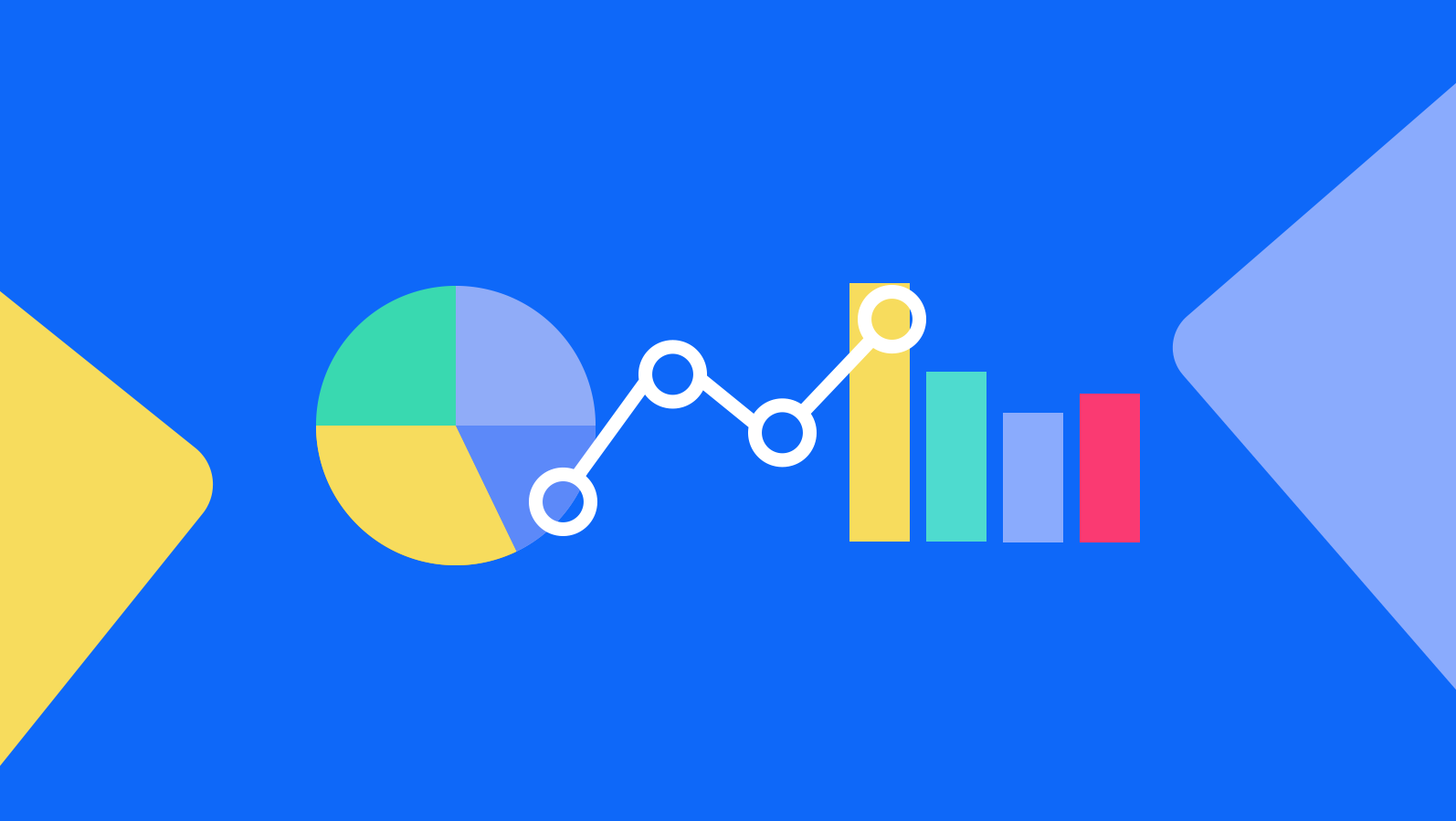
Consumer surveys are critical tools for sharpening your market research efforts, but they go far beyond that. They also help inform your advertising, marketing, product and sales strategies — they’re that powerful.
However, choosing the right survey for your needs may prove to be difficult, as there aren’t merely many different insights your brand may target, but there are also so many survey types to choose from.
We’ve covered the three main types of survey research methods. These methods are mainly centered on the frequency of survey distribution, while some of them include thematically-oriented sub-types.
Luckily for researchers, marketers and business owners, there is a multitude of survey types and subtypes. Some of these survey types fall within the aforesaid three main survey research methods, while others can be categorized as methods of quantitative or qualitative research.
Let’s get familiar with the various types of surveys for consumer research and other avenues of research.
Brand Awareness Surveys
This type of survey is generally the first you should consider conducting before you undertake any other survey types about your customers.
It is most ideal to run a brand awareness survey when you’re well-acquainted with your target market. However, you can conduct this survey even before you’re fully aware of who makes up your target market.
That is because you want to ascertain who knows about your brand; sometimes this can be consumers who narrowly fit within your target audience and sometimes this can be those who are not potential customers.
The latter is important in that although those consumers may not be interested in your brand, they may pass it along to someone who is, since they know about it.
Band awareness, nonetheless, is so much more than whether customers know about your brand. It includes:
- Awareness of what your brand stands for
- What the company is trying to achieve (beyond just selling something)
- The meaning behind your company name or logo
- How you differ from your competitors
As such, this survey type doesn’t merely measure, as it largely seeks to market your brand and everything it has to offer (including style and experiences).
Here are a few considerations to concentrate on for your brand awareness survey:
- Understanding whether your consumers acknowledge your company when they see it.
- Gauging how well your target market can recall your business by way of memory.
- Discovering how loyal your customers are loyal to your brand, especially in times of crisis.
- Ascertaining what customers associate with your brand.
- Bringing to light opinions on your logo and branding components.
When you’re in the midst of a marketing campaign and would like to work out how consumers are reacting to it, you can do so with this kind of survey. Here’s precisely what it can help you:
- Identify which strategies and investments are most effective and which are under-performing.
- Confirm if the opinions of your business are in accordance with how you intend on positioning your brand.
- Pinpoint sentiments and associations about your brand that can help uncover more business opportunities.
- See how your offering or experiences can improve.
Here are some useful questions to ask in brand awareness surveys:
- When you think of this product, what brand comes to mind?
- Which of the following have you tried? (Multiple selections)
- When was the last time you used this product category?
- How many of the brands have you heard of? (Select all that apply)
- When you think of this product, what brand comes to mind?
Customer Satisfaction Surveys
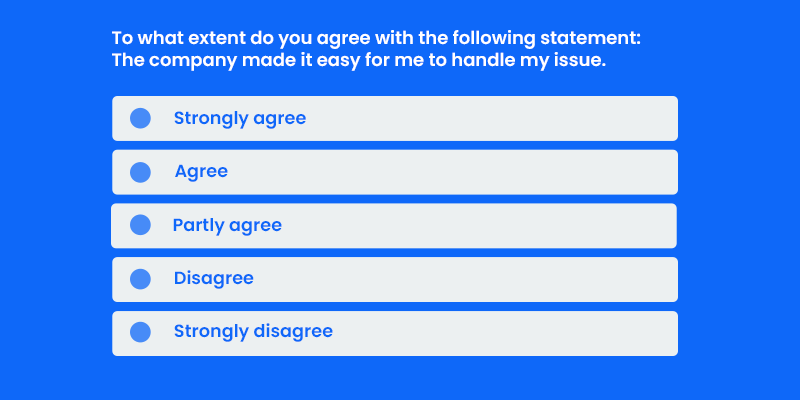
The most commonly used types of surveys, customer satisfaction surveys, like their name implies, gauge customer satisfaction.
Businesses can use these surveys to measure how content their customers are about a number of their experiences. These experiences include a business’s:
- Product
- Service
- Online shopping
- UX
- Events
Since the participants’ responses are direct ratings of a range of offerings, businesses can make educated decisions on how to change their offerings or their overall CX. The responses can also show businesses which aspects of their business are profitable, so the businesses can, in turn, double down on those.
Customer satisfaction surveys are generally short and rely on several visual measurement tools as ratings. These include:
- Stars and other shapes to determine how good or bad an experience was
- Numbered scales
- Color-coded scales
Like other surveys, customer satisfaction surveys rely on questionnaires (if the above units weren’t adequate for research).
Understanding how pleased your customers are is crucial for innovating your product, service and customer experience (CX). It can also determine the following:
- Whether or not a consumer intends to buy from you and is loyal to your business.
- Negative feelings towards your product, service, employees or experience.
- Knowing and making sure that customers are satisfied will reduce churn and increase customer lifetime value.
- Efforts to retain happy customers.
- Who to ask for (ex on social media) for good public reviews or testimonials.
Here are some examples of customer satisfaction questions to use in the questionnaire portion of your consumer survey:
- How would you rate your shopping/web/service experience?
- How likely are you to buy from this brand or this type of brand again?
- Was your issue resolved today?
- Did you find what you were looking for?
- How do you generally feel about the service of [insert industry or specific brand]?
- How would you rate the quality of [product, service, customer service representative experience]?
- Did you have an overall positive or negative experience with [the service, company, etc]?
Event Evaluation Surveys
This type of survey relies on gaining a more specific understanding of a customer experience, which, in this case, is an event. This survey type is essential to use if your business hosts events, whether they’re grand-openings, marketing events, webinars, etc.
These surveys are also crucial to understanding your target market, even if you don’t host or take part in any events. This is because your customers’ opinions towards certain events can help you tweak your offering or your messaging more to their liking.
It can also allow you to see how your customer base spends their time and money, which is critical to market research.
Here are a few pointers on how to improve your event and business in general via event evaluation surveys:
- Ensure your survey captures honest and in-the-moment perceptions from the attendees.
- Keep these surveys short, as many people won’t want to answer a survey after participating in an event.
- Find a way to tie the event with your product or service.
- Put your customers’ needs in the questions.
- Allow customers to discover your brand if you didn’t host/take part in the event.
As for the specific questions to ask in an event evaluation survey, we’re narrowed down a few effective ones:
- What motivated you to come to this event?
- What were your favorite aspects of the event?
- What were your least favorite aspects of the event?
- How likely are you to recommend this event to a friend or colleague?
- Did the event answer your questions and concerns? (can be open-ended)
- What did you think of the [products/services] in the event?
- Will you consider checking out [brands in the event or a similar brand not in the event]?
Lead Generation Surveys
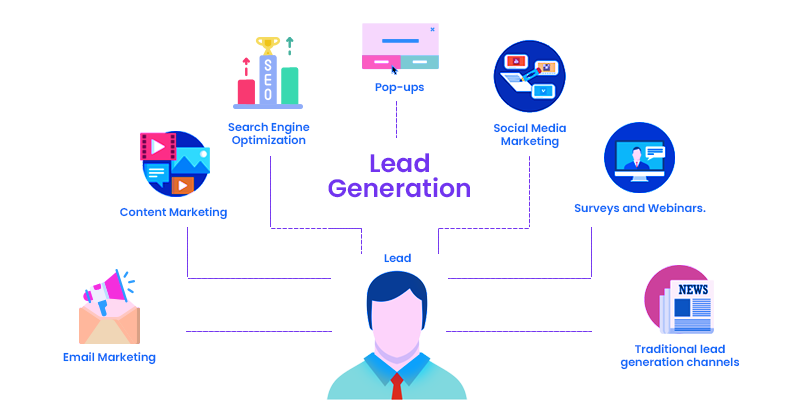
The purpose of these surveys falls more within the confines of gathering contact information from your target market. They can also help reveal the types of people who make up your target market, as they deal with questions about your consumers’ job roles and preferences.
This survey method is a great way to both learn and reel in potential customers. As such, this type of survey should be used early on in your research. But it is not meant to be rigidly conducted at this point.
You can use it throughout your marketing and market research campaigns to build up a list of quality prospects.
Since the object behind lead generation surveys is to gain leads via their contact info, there are a few things to take into consideration.
- Use only a few form fields, as too many tend to be unfavorable among users, especially if they are C-level executives who deal with their company’s finances.
- The most important fields are names, job roles and email addresses, especially in the case of B2B businesses.
- An opt-in button to get their permission to be contacted through their email address.
- Questions that ask for their preferences within your industry about your offering
- Interactive content (GIFs, quizzes, etc.) to set your brand apart.
As for the questions, remember to ask questions that will help your brand determine whether the prospect is an MQL. The following lists a few question examples for lead generation surveys:
- What is your role in the company?
- Are you in charge of your team’s budget?
- How do you intend on growing your business?[or gaining customers, questions that deal with growth/scaling]
- Would you consider buying this [ex: software] to improve your revenue and overall business goals?
- How do you stay up-to-date on industry trends?
Job Satisfaction Survey
This type is an example of a survey delving into a specific topic or theme to better understand your personas and user base. Since employment is a major factor in the quality of life, it is wise to pick your consumers’ brains on this topic.
In fact, 51% of American workers have reported that they get a sense of identity from their jobs. Since jobs define who the public is, or at least a large percentage of it, your business can stand to create surveys centered on job satisfaction.
After all, participants more satisfied with their line of work and income are more likely to spend.
A job satisfaction survey is similar to an employee satisfaction survey, but offers a much more intimate view. That is because the latter deals with all members of an organization, whereas the former deals with the personal outlook of an employee to measure their satisfaction.
Here are a few questions designed for this survey type:
- What does your job represent to you personally? (Answers can include: just a way to earn money, a way to be involved in something important, a way to better myself, etc.)
- How would you rate your satisfaction with the work you do? (Can use a scale)
- How meaningful is your job to you? (Can include a scale)
- Do you feel empowered to make purchases?
- If yes, on what kinds of items? (Answers can include media, travel tickets, products in your niche)
Choosing the Proper Type of Survey
While the above lists several fundamental survey types for your market research campaigns, these are just a drop in the bucket, in terms of quantity. There are various other survey methods, both based on survey research methods and on specific topics.
The true value in surveys comes from their ability to give you full control of the questions, thereby the topics for your consumers to answer. That’s why, before you settle on the types of surveys to use, you should first find a practical and user-friendly survey tool.
This way, you can be sure that you’re gaining the maximum satisfaction in your survey process. Once you find an exceptional survey solution, you can comb through the different survey types and choose the best one for your business.
Frequently asked questions
What is a consumer survey?
A consumer survey is a research method used to understand how satisfied consumers are with products, features, or services. It can also be used to understand how consumers feel about potential or new products and services. There are several different types of consumer surveys, including brand awareness surveys, customer satisfaction surveys, and job satisfaction surveys.
What is a brand awareness survey?
A brand awareness survey is used to understand how familiar your target market is with your brand. It can be conducted with existing customers or with a larger population to understand how you compare to other brands.
What is a customer satisfaction survey?
A customer satisfaction survey measures how satisfied existing customers are with your products or services. They tend to be short surveys that are deployed at a certain point in time, such as after making a purchase.
What type of events can benefit from an event satisfaction survey?
Any type of event that people attend, whether in-person or virtually, can benefit from the use of an event satisfaction survey. They are often used to understand satisfaction with conferences, marketing events, and webinars.
What is a job satisfaction survey?
A job satisfaction survey seeks to measure how satisfied employees are with their job. It can help a company improve many operational aspects, including retention rates, hiring processes, profitability, and management style.

